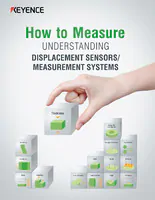Tolerance and Measurement Accuracy
- What is Tolerance?
- What is Measurement Accuracy?
- How Tolerance and Measurement Accuracy Affect Each Other
What is Tolerance?
Tolerance refers to the total allowable error within an item. This is typically represented as a +/- value off of a nominal specification. 欧宝官网开户Products can become deformed due to changes in temperature and humidity, which lead to material expansion and contraction, or due to improper feedback from a process control device. As such, it's necessary to take errors into consideration with regard to design values in the manufacturing and inspection processes. If these errors cannot be tolerated, most products will be deemed unacceptable. In this way, tolerance is meant to be used when setting the acceptable error range (the range within which quality can still be maintained) based on the design value with the assumption that variation will occur at any given step.
What is Measurement Accuracy?
Accuracy represents a measurement's degree of correctness. Accuracy can be used in such expressions as, “This measurement system offers a high degree of accuracy, so it can be assumed that the expected measurement results can be obtained,” or, “The accuracy of the measurement system has decreased; calibration may be required.” When applied to the measurement process, accuracy is referred to as measurement accuracy. The accuracy of the measurement equipment can be used as in indicator in determining how accurate the results will be. Measurement systems with higher measurement accuracy are able to perform measurements more accurately.
How Tolerance and Measurement Accuracy Affect Each Other
When manufacturing a cylinder with a length of 50 mm and a tolerance of ±0.1 mm (acceptable range: 49.9 mm to 50.1 mm), inspection with a measurement system is assumed to be as follows.
- Measurement system A: Accuracy ±0.001 mm
- Measurement system B: Accuracy ±0.01 mm
- Measurement system C: Accuracy ±0.03 mm
According to the above, the acceptable range for each measurement system will be as follows.
- Measurement system A: 49.901 mm to 50.099 mm
- Measurement system B: 49.910 mm to 50.090 mm
- Measurement system C: 49.930 mm to 50.070 mm

As shown above, measurement systems with higher accuracy are capable of obtaining more accurate results. In addition, increased measurement accuracy makes it possible to reduce the number of 欧宝官网开户products with acceptable tolerances judged mistakenly as unacceptable.





